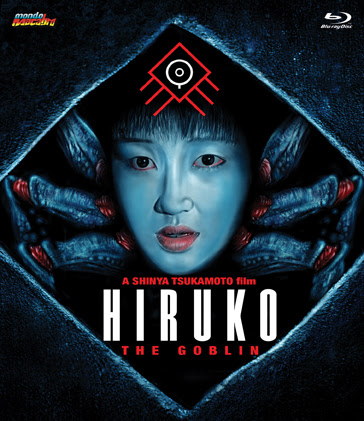When I was younger Tetsuo : The Iron Man, the debut film by Shinya Tsukamoto was one of those films you HAD to see if you digging into obscure cult cinema. Once I saw it, I wanted more, and I kept digging into Tsukamoto’s cinema with films like Tokyo Fist, Bullet Ballet, and of course Tetsuo 2. Of course, eventually I ended up with his 2nd film, and follow up to Tetsuo, Hiruko the Goblin, which Mondo Macabro are releasing to Blu-ray this month in the U.S.
Tetsuo was basically a cinematic asteroid that his Japan and the fallout went from there. Anything that Tsukamoto would do next would be scrutinized in comparison. What he did was shockingly different (to be fair almost anything, other than copying himself would be different). The film was infinitely more mainstream than anyone could have expected, rather than dwelling in the worlds of extreme violence and cyberpunk, we got a Tsukamoto who still brought elements of weirdness, but combined it elements of Spielberg, Dante, and Carpenter.
The film follows Hieda, an archaelogist played Happiness of the Katakuris actor Kenji Sawada. He lives in a small town, where a number of people have disappeared at a local school. He believes that there is a mythological underpinning to this, and goes to investigate on his own. When he gets there he is joined by a student Masao. The pair soon discover that the victims have grown spider legs, and the school is on a gateway to Hell. They have to work together to solve this huge mess of a problem.
Hiruko is a fun film, made even more so, by the awesome Carpenter-esque creature effects that run rampant (anyone who doesn’t think those spider creatures are right out of the Thing, hasn’t seen the Thing). The story doesn’t always connect, but the atmosphere and creature feature weirdness really shines through and easily makes this one to watch.
The Mondo Macabro Blu-ray is presented in 1:85:1 from a 2k scan and looks absolutely fantastic. No issues are really obvious here, detail is excellent, textures are solid, colors are stable and natural. Audio presented in Japanese is clear and crisp. Extras include an interview with the director, an archival interview with the director, an intro to the film by Tsukamoto, an archival interview with the the special effects creator, and a commentary by Tom Mes. Recommended.

